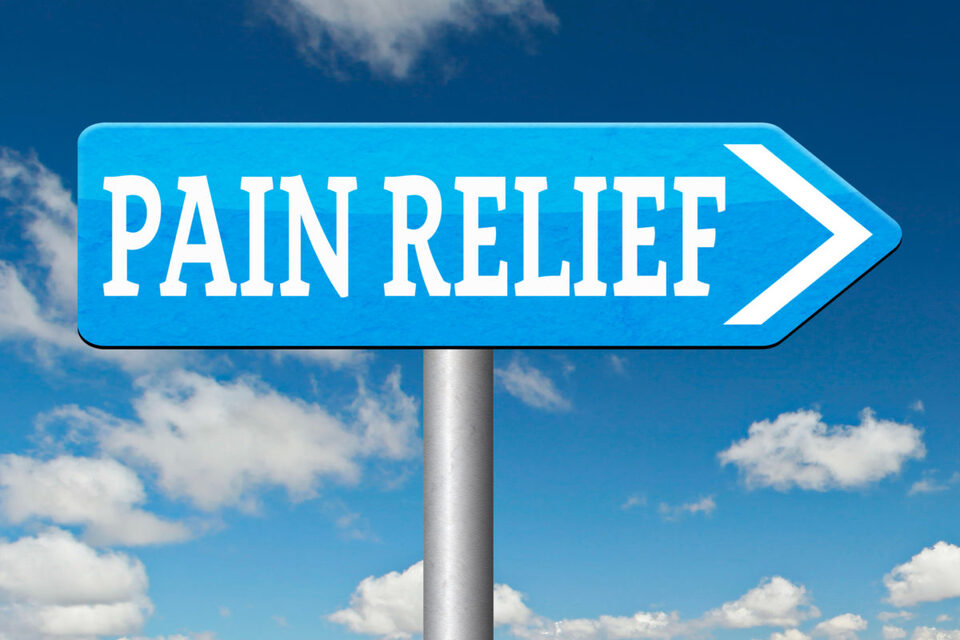
Homeopathy vs. Conventional Medicine in the Worst Pandemic in Human History
The flu epidemic of 1918-19 was devastating. It is estimated to have caused the deaths of between 25 and 100 million people worldwide. The death rate for those treated with conventional medicine was in the neighborhood of 25-30%. At the time, homeopathy, a system of medicine developed in Germany in 1827 by Dr. Samuel Hahnemann, was very popular in Europe and the United States. There were homeopathic hospitals, homeopathic medical schools and many doctors practicing homeopathy. There were widespread reports that the death rate for patients with flu treated with homeopathy was closer to 1%.
Here are some excerpts from an article entitled “Homeopathy in Influenza – Chorus of Fifty in Harmony” that appeared in 1920 in the Journal of the American Institute of Homeopathy:
Dean W. A. Pearson of Philadelphia collected 26,795 cases of influenza treated by homeopathic physicians with a mortality of 1.05%, while the average old school mortality is 30%.
Thirty physicians in Connecticut responded to my request for data. They reported 6,602 cases with 55 deaths, which is less than 1%. H. A. Roberts, MD, Derby, Connecticut
In a plant of 8,000 workers we had only one death. The patients were not drugged to death. Gelsemium was practically the only remedy used. We used no aspirin and no vaccines. -Frank Wieland, MD, Chicago.
I did not lose a single case of influenza; my death rate in the pneumonias was 2.1%. The salycilates, including aspirin and quinine, were almost the sole standbys of the old school and it was a common thing to hear them speaking of losing 60% of their pneumonias.-Dudley A. Williams, MD, Providence, Rhode Island.
Fifteen hundred cases were reported at the Homeopathic Medical Society of the District of Columbia with but fifteen deaths. Recoveries in the National Homeopathic Hospital were 100% -E. F. Sappington, M. D., Philadelphia.
I have treated 1,000 cases of influenza. I have the records to show my work. I have no losses. Please give all credit to homeopathy and none to the Scotch-Irish-American! -T. A. McCann, MD, Dayton, Ohio.
The Journal of the American Institute for Homeopathy in May, 1921 wrote that Dr. T A McCann, from Dayton, Ohio reported that 24,000 cases of flu treated allopathically had a mortality rate of 28.2% while 26,000 cases of flu treated homeopathically had a mortality rate of 1.05%.
What is Homeopathy?
Homeopathy is based on the principle that “like cures like.” This means that any substance capable of producing symptoms in a healthy person can cure similar symptoms in a person who is sick. This idea is referred to as the “law of similars.” For instance, an onion makes your eyes water and your nose burn. If you are having an attack of hay fever with watering eyes and a burning nose, a homeopathic remedy made from onion can relieve it.
A second homeopathy principle is that you should administer the least amount of medicine necessary to evoke a healing response. This is called the “minimum dose.” To prevent side effects, Hahnemann began successive dilution with shaking his medicines to find the point at which they would be therapeutic but not toxic. He also discovered that in many situations the best cure was achieved by the highest possible dilution. Homeopathic remedies can be taken orally or used in topical ointments.
Homeopathy has been controversial partly because homeopathic medicines in high potencies are so diluted that theoretically there should be no measurable remnants of the starting materials left. In a 2010 study, researchers demonstrated for the first time the presence of nanoparticles of the original substance in these extreme homeopathic dilutions.[1]
Homeopathy Today
Currently, 3,000 substances are used as homeopathic remedies to treat everything from colds and cough to arthritis and cancer. Healthcare providers who practice Homeopathy typically conduct lengthy patient interviews to pinpoint the remedy most likely to be effective.
In the United States, homeopathic remedies are regulated by the FDA. Thanks to the efforts of homeopathic physician Royal Copeland, the US Senator from New York when the Federal Food, Drug, and Cosmetic Act was passed in 1936, homeopathy’s own standards, as expressed in the Homoeopathic Pharmacopoeia of the United States (HPUS), were incorporated as part of the act.[2] Homeopathic remedies are generally recognized as safe. Most are sold over the counter. They can be found in health food stores and online.
There are currently relatively few homeopathic practitioners in the United States. Since homeopathic remedies are not toxic, it’s safe to try them on your own if you can’t find a practitioner.
Homeopathy for Flu-Like Symptoms
Homeopathy is not based on the identification of a specific pathogen, such as that present in the current coronavirus pandemic. It is based on the symptoms the patient is experiencing, which are believed to be the body’s attempt to heal the problem. Using a remedy that matches the symptoms nudges the body’s healing system into higher gear.
Here are some homeopathic remedies that are commonly used to treat the flu, along with their indications, as reported by homeopathyhealings.com:
Arsenicum Album -You feel chilly and exhausted, along with an anxious physical restlessness and mental anxiety. You may be thirsty, but often only takes small sips. If the digestive system is involved, nausea with burning pain, or vomiting and diarrhea may occur. If the flu is respiratory, a watery, runny nose with sneezing and a dry or wheezing cough are often seen. Your head usually feels hot, while the rest of the body is chilly.
Bryonia – When you are very grumpy and feel miserable with the flu, wanting only to lie still and be left alone, this remedy is likely to be useful. Dry painful cough that makes your head hurt, muscle aches or stomach pain may be the major symptoms. Everything feels worse from even the slightest motion. Your mouth usually is dry, with a thirst for long cold drinks that doesn’t satisfy the thirst.
Eupatorium – Flu with deep pain occurring in the legs or back (“as if the bones would break”) often responds to this remedy. Pain may be felt in the eyeballs, with a heavy sensation in the head. Illness often begins with chills and thirst, followed by high fever. Chills may be felt the back and legs, and the aching in the bones is worse from motion. You feel “wiped out” and miserable.
Gelsemium – For flus that come on when the weather changes from cold to warm. For the commonest of flus which come on slowly and are accompanied by weak, aching muscles. You have a dull headache and a great feeling of heaviness … everywhere, especially the eyelids, head and limbs. You are NOT thirsty even with the fever which alternates with chills and shivers that run up and down the spine. You’re apathetic, dull and drowsy.
One action you can take the minute you think you be coming down with a flu-like illness is to go to any local drugstore or supermarket and get a box of Oscillococcinum. This remedy, when taken at the very start of a flu-like illness, can either shorten the illness duration or possibly prevent the illness from taking hold in the first place.
The Problem With Conventional Treatment of Flu
Dana Ullman, MPH, CCH, a noted homeopath and the author of 15 books on homeopathy, reports that one of the reasons so many people died in the 1918 flu pandemic was the widespread use of massive doses of as much as 25 tablets of aspirin daily to reduce fever.[3] One problem with this is that fever is part of the body’s immune response to kill viruses, and suppressing fever limits the body’s ability to fight the virus. Another problem is that aspirin in high doses can cause the lungs to bleed, further weakening the patient.
A similar problem is happening today with the use of ibuprofen and other NSAIDs to suppress fever. Also, many doctors have been sounding the alarm that ibuprofen has the ability to make it easier for the virus to enter cells, which makes the disease worse, but the mainstream medical community is ignoring the warnings.
Homeopathy for Pain
The same principles that make homeopathic treatment safe and effective for treatment of infectious diseases also apply to pain relief. Instead of suppressing pain, which is a symptom of an underlying condition, homeopathic remedies treat the root cause of the problem. Because the remedies are so diluted, they don’t have negative side effects like opioids and other pharmaceuticals used to treat pain.
See this article for more information on treatment of pain with homeopathy: Homeopathy for Pain: Safe, Natural, Effective.
Find a Homeopath Here
The author, Cindy Perlin, is a Licensed Clinical Social Worker, certified biofeedback practitioner and chronic pain survivor. She's the founder and CEO of the Alternative Pain Treatment Directory and the author of The Truth About Chronic Pain Treatments: The Best and Worst Strategies for Becoming Pain Free. She's in private practice in the Albany, NY area and also offers phone and web-based consults.
References:
[1] Chickcramane, P.S., Suresh, A. K., Bellare, J. R., & Kane, S. G. (2010). Extreme homeopathic dilutions retain starting materials: A nanopathic perspective. Homeopathy. 99(4), 231-42.
[2]http://en.wikipedia.org/wiki/Regulation_and_prevalence_of_homeopathy#United_States
[3] Ullman D. Lessons from a Century After the Flu Epidemic of 1918: How Conventional Medicine Killed Millions and How Homeopathic Medicines Saved illions. https://articles.mercola.com/sites/articles/archive/2018/12/06/homeopathic-remedies-for-influenza.aspx?fbclid=IwAR0Y4I7JhjE33Aitpez_b6y4OZGDO6ftHkKwqzMoRQJlZLL4uO0C_9wnBXc











Comments